College Seminar I
Bryn Mawr College
Fall 2005
Questions, Intuitions, Revisions:
Storytelling as Inquiry
Anne Dalke (English House, ext. 5308, adalke@brynmawr.edu)
Paul Grobstein (Park Science Building, ext. 5098, pgrobste.edu)
Images in this syllabus created by Sharon Burgmayer, Rachel Grobstein, and Janna Stern.
|
This course was co-designed by faculty members in Biology and English to explore the variety of ways in which we are all continually reaching for new understandings of ourselves and our place in the universe. Readings include fairy tales, the nineteenth-century satire Flatland, Bertold Brecht's play Galileo, Connie Willis's science fiction novel Doomsday Book, and essays on topics ranging from psychology, linguistics and neurobiology to the culture of Bryn Mawr. In addition to traditional elements of inquiry--acting, enacting, observing, experimenting, reading, talking and writing--we will explore images, the potential of the web, and other aspects of developing information technology. Our task is to enhance our creative, synthetic, critical and communicative skills, to learn how to better "get it less wrong," both individually and collectively. Students will be required to contribute to the education of their colleagues as well as to people beyond the College by participating in a weekly on-line forum and putting some of their essays on the web.
Course Requirements: |
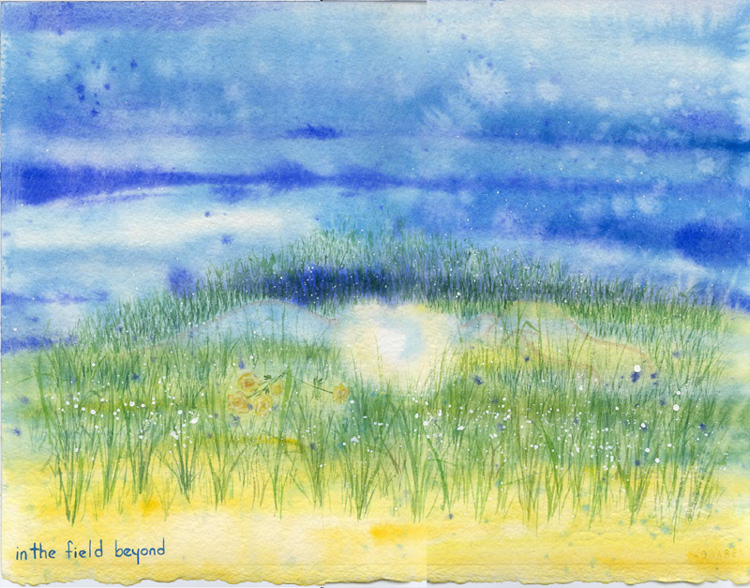
Out beyond ideas of wrongdoing and rightdoing,
there is a field. I’ll meet you there. |
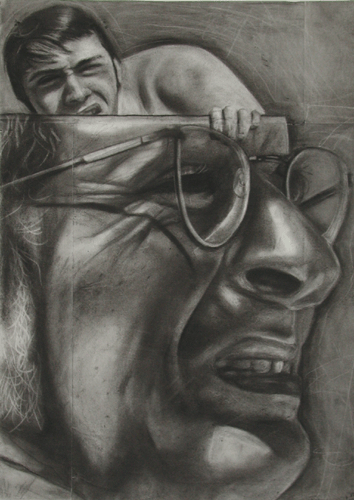
|
I. Reading and revising ourselves
The stories we tell ourselves, particularly the silent or
barely audible
ones,
are very powerful. They become invisible enclosures. Rooms with no air.
One must open the window to see further, the door to possibility….
How to tell a story without fashioning it along the prefabricated lines? . . . .
we are immersed in an old story and cannot see what is happening." | |
 |
"I wrote the story first. It was a true story. But it seemed too simple. So then I wrote the counter narrative: a second voice, second thoughts." Susan Griffin. Reading at Bryn Mawr. February 2, 1999. |
Week One
T, 8/30
Introduction to the course
Reading an image
Tracy Chapman. "Telling Stories."
Patricia Hempl. "Memory and Imagination." I Could Tell You Stories. New York: Norton, 1999. 21-37.
Mary Catherine Bateson. Composing a Life. New York: Atlantic Monthly Press, 1989. 1-34, 232-241.
Maxine Hong Kingston. The Woman Warrior: Memoirs of a Girlhood Among Ghosts. New York: Knopf, 1976. 189-196..
Audre Lorde. "The Transformation of Silence into Language and Action." Sister Outsider: Essays and Speeches. Freedom, California: Crossing Press, 1884. 40-44.
Week Two
T, 9/6
Selected excerpts by Charles Darwin, Soren Kierkegaard, Virginia Woolf from
Nothing Begins with N: New Investigations of Freewriting.
Ed. Pat Belanoff, Peter Elbow and Sheryl I. Fontaine.
Carbondale: Southern Illinois University Press, 1991.
Paper #1, Draft A, 4-5pp: Compose your own life of learning.
In-class writing workshop on Draft A
Th, 9/8
Jakob and Wilhelm Grimm. "Little Briar Rose" and "Cinderella."
The Complete Grimm's Fairy Tales. Trans. Margaret
Hunt. Revised James Stern. New York: Pantheon, 1972. 118-122,
64-71.
"A Boarhog for a Husband" and "Yeh-Shen." Myths, Legends and Folktales of America. Ed. David Leeming and Jack Page. New York : Oxford University Press, 1999. 90-93, 202-206.
"Making the Stone Smoke" and "Why They Name the Stories for Anansi." Afro-American Folktales: Stories From the Black Tradition in the New World. Ed. Roger Abrahams. New York: Pantheon, 1985. 97-98, 182-183.
Anne Sexton. "Cinderella" and "Briar Rose (Sleeping Beauty)." Transformations. Boston: Houghton Mifflin, 1971. 52-57, 106-112.
Karen Armstrong. Buddha. New York: Viking, 2001. 30-33.
Week Three
T, 9/13
Draft B, 4-5 pp: Write a fairy tale
(maybe re-compose your life of learning as a fairy tale?).
In-class writing workshop on Draft B
Th, 9/15
Bruno Bettelheim. "Reflections: The Uses of Enchantment."The New Yorker (December 8, 1975): 50-114.
Week Four
T, 9/20
Juana Rodriguez. Guidelines for Revision.
Draft C: Using Bettelheim's methodology (or another), analyze your fairy tale.
In-class writing workshop on Draft C
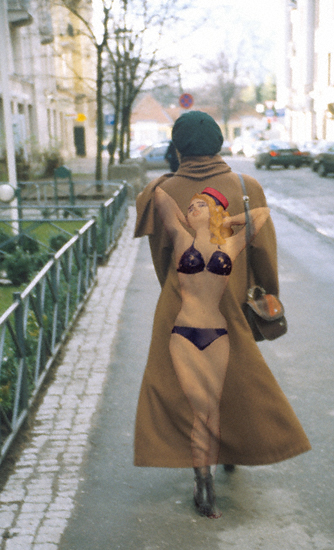 |
II. Ordering and Re-ordering the World
"Physical concepts are free creations
of the human mind, and are not, however it may seem,
uniquely determined by the external world."
--Albert Einstein, in Albert Einstein and Leopold Infeld. |  |
Th, 9/22
Bertolt Brecht. Galileo. 1952; rpt. New York: Grove, 1966.
Week Five
T, 9/27
Paper #2, Draft A: drawing on Brecht's play,
reflect on why we are both motivated and reluctant
to revise the stories we tell about the world. What provokes us to
this activity? What prevents us from engaging in it? How does it
profit us, and what are its costs?
In-class writing workshop on Draft A
Th, 9/29
They Might be Giants. "Particle Man."
Edwin Abbott. Flatland: A Romance of Many Dimensions. 1885; rpt. New York: New American Library, 1984.
Richard Monastersky. "Recyling the Universe: New Theory Posits that Time Has No Beginning or End. The Chronicle of Higher Education. June 7, 2002.
Michel Foucault. Preface and Forward. The Order of Things: An Archaeology of the Human Sciences. 1966; rpt. and trans.New York: Vintage, 1973. ix-xxiv.
Week Six
T, 10/4
Draft B: Drawing on Flatland and Foucault, reconsider and
revise your reflections about why we (refuse to?) revise the stories
we tell about the world.
In-class writing workshop on Draft B
Th, 10/6
Daniel Dennett. Chapters 1-3. "Tell Me Why," "An Idea is Born" and
"Universal Acid." Darwin's Dangerous Idea: Evolution and the
Meaning of Life. New York: Simon and Schuster, 1995. 17-83.
10/11-13 FALL BREAK
Week Seven
T, 10/18
Draft C: Draw on Dennett's ideas to (once again)
revise your reflections about why we (refuse to?) revise
the stories we tell about the world.
In-class writing workshop on Draft C

|
III. Apprehending and Absorbing the Storyteller
"The Brain--is wider than the Sky--
The Brain is deeper than the sea--
The Brain is just the weight of God--
Emily Dickinson. 1896; rpt. The Complete Poems. |
Th, 10/20
Michael Polanyi. The Tacit Dimension. New York: Anchor,
1967. 3-25.
George Lakoff and Mark Johnson. "Introduction: Who are We?" "The Cognitive Unconscious" and "The Embodied Mind." Philosophy in the Flesh: The Embodied Mind and Its Challenge to Western Thought. New York: Basic Books, 1999. 3-44.
Lisa Belkin. "The Odds of That: Coincidence in an Age of Conspiracy." The New York Times Magazine. (August 11, 2002). 32f.
Week Eight
T, 10/25
Paper #3, Draft A: Collect data on tacit understanding.
Th, 10/27
Lev Semenovich Vygotsky. "The Problem and the Approach" and "Thought and Word." Thought and Language. Trans.
Eugenia Hanfmann and Gertrude Vakar. Cambridge: M.I.T. Press, 1962.
1-8, 119-153.
Steven Pinker. "An Instinct to Acquire an Art" and "Chatterboxes." The Language Instinct. New York: HarperPerennial, 1995. 15-54.
Week Nine
T, 11/1
Draft B: Interpret the observations you have made.
In-class writing workshop on Draft B
Th, 11/3
Oliver Sacks. "The Last Hippie" and "A Surgeon's Life."An Anthropologist on Mars. New York: Vintage, 1995. 42-107.
Week Ten
T, 11/9
Draft C: What new questions does your
explanatory theory raise?
What new experiment need you now design, to elicit a further set
of observations?
In-class writing workshop on Draft C
|
IV. Revising Culture's Story
All that you touch
All that you Change
The only lasting truth
God
Earthseed: The Books of the Living |
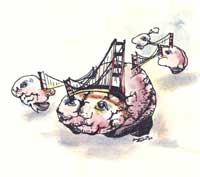
|
Th, 11/11
Leslie Marmon Silko. "Language and Literature from a Pueblo Indian
Perspective." Critical Fictions, ed.
Philomena Mariani.
Seattle: Bay Press, 1991. 83-93.
Clifford Geertz. "Deep Play: Notes on the Balinese Cockfight." The Interpretation of Cultures: Selected Essays. New York: Basic, 1973. 195-240.
Week Eleven
T, 11/15
Paper #4, Draft A: Tell the story of some aspect of culture with which
you are familiar.
In-class writing workshop on Draft A
Th, 11/17
Ray McDermott and Hervé Vareene. "Culture as
Disability." Anthropology and Education Quarterly 26, 3
(1995): 324-348.
Hervé Varenne. Extra Burdens in the Search for New Openings: On the Inevitability of Cultural Disabilities. (November 17, 2003.)
Harriet McBryde Johnson. "Unspeakable Conversations, Or How I Spent One Day as a Token Cripple at Princeton University." New York Times Magazine. (February 16, 2003). 50-79.
Harriet McBryde Johnson. "The Disability Gulag." New York Times Magazine. (November 23, 2003). 59-64.
Amy Harmon. "Neurodiversity Forever: The Disability Movement Turns to Brains." New York Times. (May 9, 2004). 1, 7.
Institute for the Study of the Neurologically Typical. (March 18, 2002).
Week Twelve
T, 11/22
Draft B: Describe the disabling aspects of your ("hometown") culture.
In-class writing workshop on Draft B.
Th, 11/24 THANKSGIVING HOLIDAY
Week Thirteen
T, 11/29
Connie Willis. Doomsday Book. New York: Bantam, 1992.
Th, 12/1
Willis, continued
Week Fourteen
T, 12/6
Draft C: What is abling, what dis-abling, about the world Willis portrays?
What different forms of abling and dis-abling might Kivrin have to contend with if she time-traveled to your hometown?
Drawing both on the novel and your earlier account of your culture, explore how we might go beyond abling and dis-abling.
In-class writing workshop on Draft C.
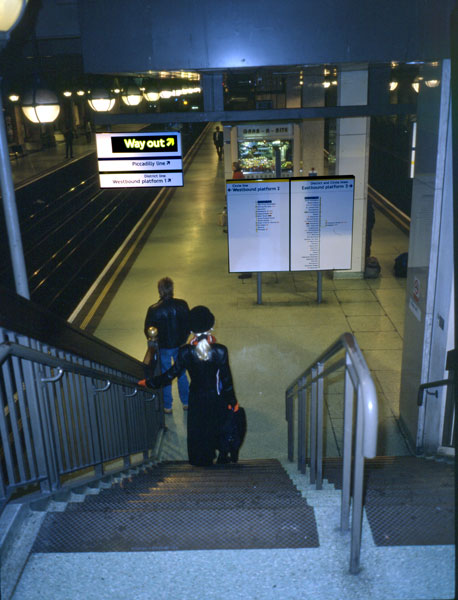 |
V. Re-vising and re-visioning Bryn Mawr
If resistance is always the sign of a counter-story,
ambivalence is perhaps the state of holding on to more than one story at a time."
Barbara Johnson, The Feminist Difference: Literature, Psychoanalysis, Race,
and Gender. |
 |
Th, 12/8
Helen Horowitz. "A Certain Style of Quaker Lady Dress" and
"Behold They Are Women!" Alma Mater: Design and Experience in
the Women's Colleges from Their Nineteenth-Century Beginnings to the
1930s. New York: Knopf, 1984. 105-133.
The Women of Summer: The Bryn Mawr Summer School for Women Workers, 1921-1938 (videorecording). Dir. Suzanne Bauman. New York: Filmakers Library, 1985. (55 mins.)
Rita Rubinstein Heller. "An 'Unnatural' Institution." "The Women of Summer: The Bryn Mawr Summer School for Women Workers, 1921-1938." Dss. Rutgers University, 1986. 1-36.
Selections from Bryn Mawr Alumnae Bulletin. (October 1921-May 1935).
Reading week
12/13-12/15
Ursula K. LeGuin. Bryn Mawr Commencement Address (1986). Dancing
At the Edge of the World: Thoughts on Words, Women, Places. New
York: Harper and Row, 1989. 147-160.
Anne Dalke, Paul Grobstein and Elizabeth McCormack. Theorizing Interdisciplinarity: The Evolution of New Academic and Intellectual Communities (September 2004).
 | 12:30 F, 12/16 Final Portfolio due, including Paper #5: Write the story of Bryn Mawr, as you now understand it. What disabilities are generated by what we see being taught here? How might we revise the Bryn Mawr Story? (This might take the form of a fairy tale, or a montage, or a poem; it could be collaboratively written.) |
 |

